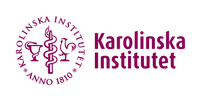About
The autoradiography core facility (ARG CF) is a core facility at the Division of Imaging Core Facilities, Department of Clinical Neuroscience, Karolinska Institute. Our facility is fully outfitted and staffed to support radioligand binding and autoradiography studies. We provide full service and consultation, or training and access to equipment for our users to carry out their studies. The methods that our facility specializes in are important in pharmacology and cellular signaling research, as well as for development and validation of tracers for positron emission tomography (PET) imaging.
Radioligand binding is used to study the binding properties of a radioactive isotope-labelled compound (radioligand) to a specific target, such as a receptor or enzyme.
Autoradiography is used to visualize the location and distribution of a radioligand in a sample and assess its target-specificity.
Visit the ARG website at Karolinska Institutet here.
Services
ARG CF can help you, e.g.:
•Visualize radioligand localization in different anatomical regions / biodistribution;
•Assess target-specificity of a candidate drug or PET tracer;
•Characterize the binding affinity properties of a candidate drug/compound for a given target (e.g. enzyme, receptor);
•Measure the maximum density of the target protein available to the radioligand in a given tissue/organ;
•Drug screening studies, screening for drug candidates that compete with high affinity for binding to a particular target;
•Measure potency and efficacy of a drug candidate for a GPCR, with the advantage that your measures are not confounded by downstream signaling amplification or other modulation that other assays can’t exclude;
•Characterize phenotype differences using a functional radiometric assay (GTPgammaS) of GPCR activity;
•Accurately quantify GPCR desensitization in different conditions, treatments, etc.
Make lab reservations here.
Equipment
1,
The Hidex 600 SL is a state-of-art, high throughput, liquid scintillation counter that can detect beta and alpha radiation by Liquid Scintillation Counting (LSC). It features three photomultiplier detectors, which enables triple to double coincidence ratio (TDCR) counting,
an absolute counting method for obtaining counting efficiency of the samples without external or internal standard sources. TDCR is a universal method applicable for both chemical and color quenching, for aqueous and organic samples and for different cocktails and range of isotopes. Our instrument also includes an EU-152 external standard, to enable counting of low activity samples with variable quench, which is useful for e.g. measuring biodistribution of a 3H-labelled tracer in solubilized samples from different tissues/organs. The instrument detects H-3, C-14, S-35, P-33, P-32, Fe-55, I-125, Ni-63, Sr-/Y-90. Other nuclides and Cerenkov counting can also be defined.
2. The Typhoon FLA 9500 IP is a phosphorimager from the latest class of Typhoon imagers by Cytiva (formerly Amersham/GE Healthcare). This imager produces digital autoradiograms obtained by detecting the energy retained in “storage phosphor screens” through exposure to the ionizing radiation from all commonly used isotope-labelled compounds bound to target/tissue. Scanning area: 35 x 43 cm; Pixel size: 10 to 200 μm.
3. The Millipore MultiScreen Assay system makes it possible to carry out an entire assay from sample incubation to scintillation counting in a single 96-well plate.
4. The Leica CM1860 is a cryostat for sectioning frozen tissue samples. Section thickness: 1-100 µm. Maximum specimen size: 55x55mm or 50x80mm

Copyright © All Rights Reserved